Shade in any garden can be a tricky thing to deal with, nobody likes wasted space but we all know that not everything will grow in the shade. So what do you do? Well luckily for you I have this handy list of 5 herbs that will thrive in a shady spot!
1. Chives
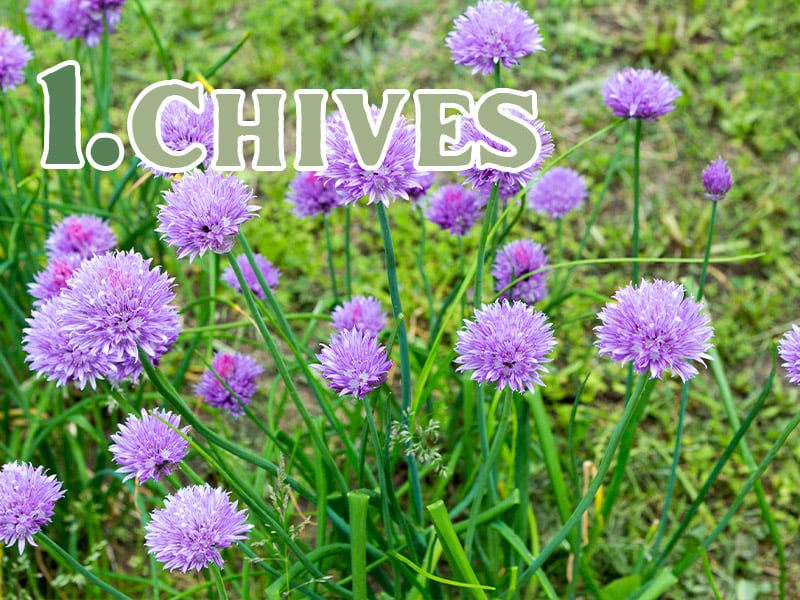
Part of the onion family, chives are very easy to grow and keep coming back year after year. What's more butterflies and bees absolutely love the bright purple flowers that chives produce.
Chives can be direct sown into place. Sow from mid-spring, sow them thinly at a shallow depth, around 1cm. If you want an earlier start with your chives then they can be grown on a sunny windowsill.
Use a heated propagator or place a seed tray on a windowsill above a radiator. Your seedlings should appear within 3 weeks. When they get to around 5-6cm high they are ready to be transplanted.
Move them into larger pots with regular compost in. Try and grow them from this point in cooler conditions to improve their hardiness. Let them grow on like this for a good month or two before gradually hardening them off.
Once you have hardened them off for a week or two you can move them into their final position in your herb garden. They will grow well both in pots and in the ground and will tolerate a shady spot as long as it gets a couple of hours of sunlight per day.
2. Mint
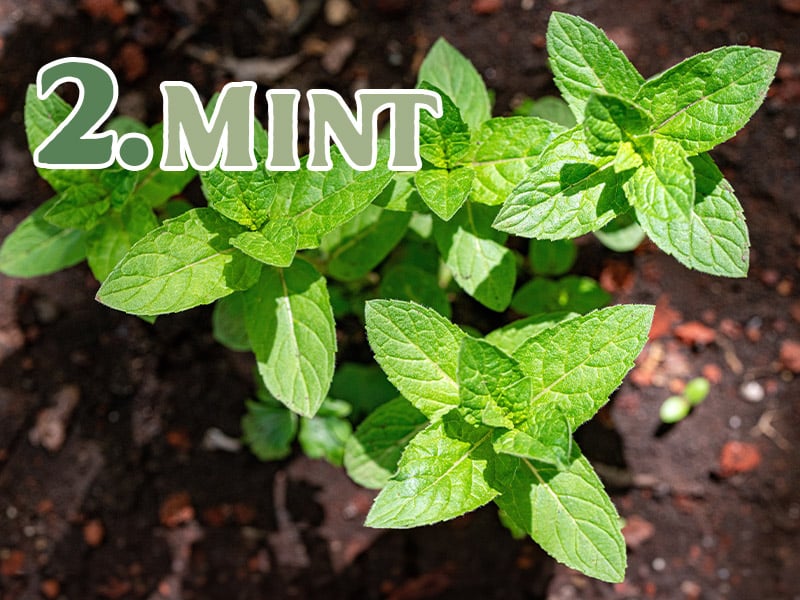
Mint can be sown all the way from winter through to summer. If you are going to sow it early though then sow it indoors or in a greenhouse.
Sow in pots or trays on the surface of barely moist seed compost. Do not cover the seeds with compost. Place the seed tray in a propagator at a temperature of 21-24C or seal inside a clear polythene bag until germination which takes 7 - 16 days.
When seedlings are large enough to handle, transplant into 7.5cm (3") pots and grow in cooler conditions. When all risk of frost has passed, gradually acclimatise mint plants to outdoor conditions over 7 - 10 days before planting outdoors.
Mint will grow well in both full sun and shade, if growing in the shade then try to pick a spot that gets a couple of hours of sunlight per day or dappled shade.
It can be a good idea to grow mint in a pot as it has very vigorous growth and can take over if grown in the ground.
3. Parsley
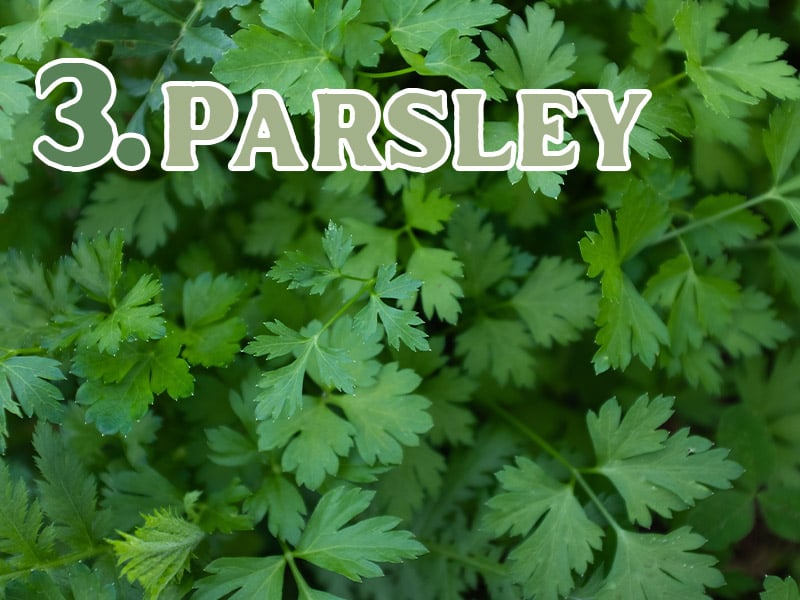
You can direct sow parsley seed outdoors from March to July or you can sow earlier indoors. When you combine inside out outdoor sowing you can end up with fresh parsley all year round.
Grow parsley in a well-prepared seedbed in full sun or partial shade. Sow seeds thinly at a depth of 1cm (½") in drills 30cm apart. Parsley seeds are very slow to germinate taking up to 28 days, especially in wet, cold soils.
If sowing indoors sow into 7.5cm (3") pots of free-draining seed compost, maintaining a temperature of 16-21C (65-70F) until after germination. When large enough to handle, thin out seedlings to 23cm (9") apart.
When parsley has been started indoors you need to acclimatise parsley plants to outdoor conditions over 7 - 10 days before planting outdoors when the risk of frost has passed. To acclimatise parsley move it outdoors for a few hours to begin with before bringing it back indoors, build this time up over the 7-10 days so the plant is spending longer and longer outdoors.
4. Dill
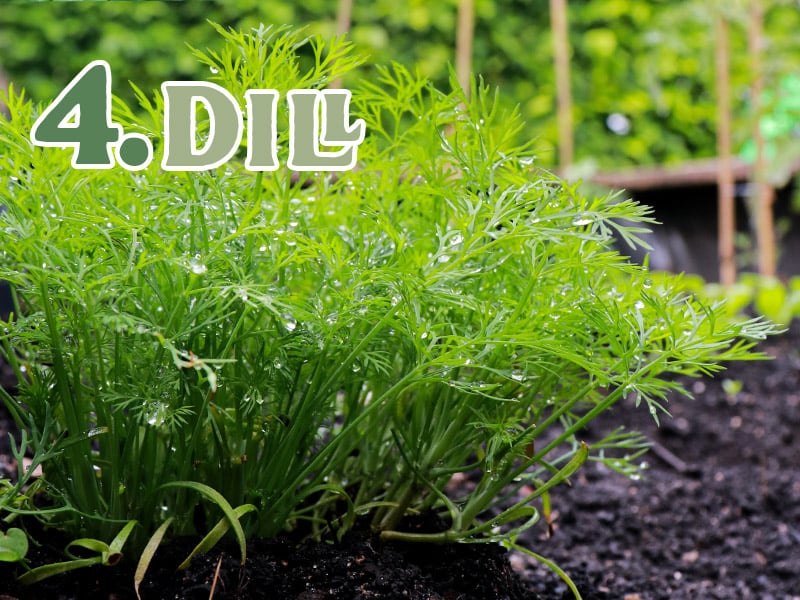
Dill can be sown directly onto the surface of seed compost, just make sure to wet the compost first before sowing. If you are sowing this way then do it in a propagator or seed tray and a sunny windowsill.
Gradually acclimatise dill plants to outdoor conditions over 7 – 10 days before planting outdoors on well-drained soil in full sun when all risk of frost has passed.
Alternatively, you can sow dill outside from roughly March through until April. You want to sow into thin drills only around 1cm deep and space each row about 15cm apart. Sowing in succession every few weeks adding more rows will allow for a greatly extended harvest period.
5. Lemon Balm
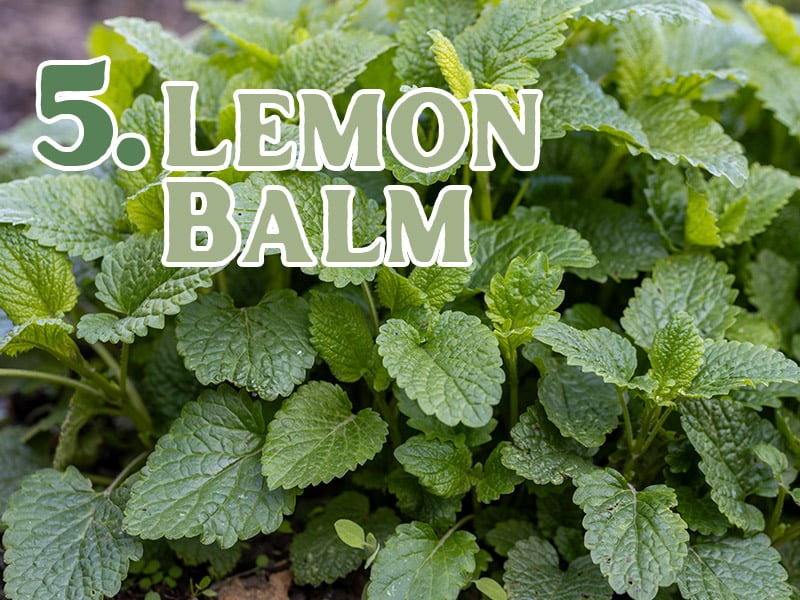
Sow lemon balm from late March to May on the surface of good seed compost and cover with a sprinkling of compost or vermiculite. Place the seed tray in a propagator at a temperature of 20-25C (68-77F) or seal it inside a polythene bag. Keep the compost slightly dry at all times. Do not exclude light as this aids germination which usually takes up to 21 days.
When seedlings are large enough to handle, transplant and grow them in cooler conditions until large enough to plant outdoors. When lemon balm plants are well grown and all risk of frost has passed, acclimatise them to outdoor conditions over 7 to 10 days. Transplant outdoors in full sun or partial shade on any moist, well-drained soil at a distance of 30cm (12") apart. Lemon balm plants will tolerate poor soils. This herb is vigorous, but growing lemon balm in containers will help to restrict its growth.
9 Vegetables That Will Grow in the Shade
What do you do if you have a shady garden? Or even just a shady spot in the garden?
Well, luckily, there are still plenty of vegetables that will grow in the shade and provide excellent harvests.
So with no further ado, let's get into my list of 10 veggies to grow in the shade.
Beetroot

Beetroot
Beetroot will tolerate shade and grow in all but the darkest of spots.
They are a quick-growing crop, and you can use the leaves as well as the root, so why not give them a try?
If you are not a massive fan of the earthy beetroot taste, try growing golden beetroot, as the taste is much less pronounced.
They also have the added benefit of not staining as regular beetroot does.
Broccoli

Brocolli can survive just fine in the shade, both regular broccoli and the sprouting kind don't mind a bit of shade.
In fact growing in the shade can help prevent bolting during the warmer months.
So if you want to try and grow broccoli all year round then try a shady spot.
Cabbage

Like other brassica crops, you might have noticed a few in this list already, cabbage can tolerate the shade.
They are cold-loving plants and as such don't need to be sat in full sun all day.
They actually often do better in partial shade than they do in full sun.
Carrots

Another veg that can grow in shadier spots are carrots.
They will do better if they get some direct sunlight for part of the day but they can grow in full or dappled shade, don't expect them to grow as large.
Leeks

leeks can grow in very shady spots, so if your garden has a particularly dark spot then why not give this tasty crop a grow?
In fact, they are another vegetable on this list that does better in partial shade than they do in full sun.
Parsnips

Another root vegetable makes it onto our list, parsnips.
They will do just as well in partial shade as they do in full sun, as long as they get a few hours of direct sunlight per day.
They can also grow in fully shaded spots but you will end up with a smaller harvest.
Potatoes

I actually ran an experiment last year to see if potatoes could grow in a spot that gets zero direct sunlight, and they do!
Have a look at the experiment for yourself here.
The result was a decent crop, but not as many or as larger spuds as I would have got growing them in the sun.
Still a great choice for fully shaded spots.
Swede

I love swedes, for me, they are one of the best-tasting root vegetables available.
Swedes can grow in the shade as long as they get some direct sunlight at some point in the day.
They are not one of the crops that can do well in a fully shaded spot.
Turnips






Leave a Reply